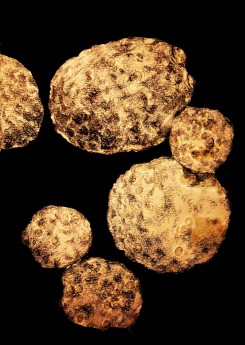Jump-started by The Origin of the Species, scientists’ fascination with evolutionary processes remains unquenchable. Many of them are interested in tracking the small genetic changes that accumulate over generations to produce diverse life-forms. But unfortunately, a very challenging aspect of studying evolution is working with the enormous timescales. Within the closed quarters of the lab, it’s hard to monitor something that takes a lifetime to notice.
Luckily, there is a branch of evolutionary biology called experimental evolution that tackles such challenges by trying to recreate evolution using artificial selection pressures. Unwittingly, humans have been performing artificial selection experiments for hundreds of years. Dog and pigeon breeders impose artificial selection pressures by selecting animals with desirable features, such as soft fur or sleek feathers. It is the years of artificial selection at the hands of breeders that explain the large size differences between chihuahuas and great danes seen today.
 So how did the cells that form us come to be? A recent paper by William Ratcliff and colleagues published in the Proceedings of the National Academy of Sciences describes a clever artificial selection experiment involving yeast cells. They were interested in studying the origin of multicellularity, a milestone in evolutionary history. According to Dr. Stephen Wright, an evolutionary biology professor at U of T, “Multicellularity has evolved many times independently. Simple multicellularity is very old, back to more than 3 billion years ago in cyanobacteria.”
So how did the cells that form us come to be? A recent paper by William Ratcliff and colleagues published in the Proceedings of the National Academy of Sciences describes a clever artificial selection experiment involving yeast cells. They were interested in studying the origin of multicellularity, a milestone in evolutionary history. According to Dr. Stephen Wright, an evolutionary biology professor at U of T, “Multicellularity has evolved many times independently. Simple multicellularity is very old, back to more than 3 billion years ago in cyanobacteria.”
Studying an event that happened over a billion years ago is kind of hard, so Ratcliff and colleagues designed a lab experiment that would result in the evolution of multicellularity in yeast cells, the common type of yeast found in the grocery store. Over the course of two months, researchers spent their time culturing the cells and suspending them in a tube of water. They collected only the heavy clusters that sank to the bottom and repeated the process many times, until eventually the cells evolved into snowflake-shaped colonies of around 12 cells.
Even though genetically distinct cells can clump together to create a mere illusion of multicellularity, these colonies were genetically identical and formed when individual cells budded off and formed a group.
“The fitness — survival and reproduction — of the cells as a multicellular entity must be higher than the survival or reproduction of single cells,” says Dr. Wright. “Part of the point of the paper is that this is much more likely to be the case if the early multicellular organism is composed of identical genotypes — [meaning that] the cells are copies of the same original genome.”
The first steps en route to complex multicellular organisms, such as humans, consist of a division of labour among these genetically identical colonies — with different cells performing different tasks for the benefit of the whole.
There has been a lot of hype in the scientific community about the significance of the Ratcliff paper.
“I think the results are quite novel and interesting,” says Dr. Wright. “It highlights how rapidly multicellularity can evolve under the right conditions, and emphasizes the importance of relatedness among cells for it to successfully evolve.”
Clearly the evolution of multicellular life didn’t occur in a test tube under the watchful eye of an exhausted grad student. However, artificial evolution experiments can still provide powerful insights into the origin of nature’s diversity.
Dr. Wright explains, “Clearly the open question with any experimental evolution study is the extent to which the experiment informs us about the real world. This study shows that if the conditions are right, this process can occur rapidly, but it doesn’t tell us that it necessarily did. In this study they impose strong selection on a specific trait that will favour clusters of cells. While we don’t necessarily think that this exact selection pressure drove the evolution of multicellularity, the study shows the potential for rapid evolution under the right conditions, so it still is a very useful approach to understanding evolution.”

